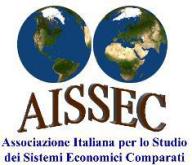by Elena Vallino, Università di Torino
This issue of Emerging Economies addresses the topic of environmental issues and policies in emerging economies. Serious environmental degradation has been associated with rapid economic growth in many emerging countries, raising concerns among international scholars and civil society. Emerging countries should design policies that address the trade-off between growth and environmental pollution if they want to avoid even more serious environmental damages which, in turn, may eventually limit economic growth. An appropriate use of incentives like subsidies, taxes, and pricing may foster efficiency in the utilization of raw materials, reduce the pollution deriving from production and consumption activities, and would allow for improvements from an environmental perspective without compromising growth. Rapid growth in emerging countries such as India and China has consistently reduced poverty and, moreover, has provided support for the global economy at the time of the recent crisis. However, these countries may repeat past mistakes of developed countries, where industrialization produced considerable environmental pollution that was not seriously addressed until relatively high income levels were reached. For example, on the one hand, these economies are becoming progressively more responsible for global carbon emissions, therefore contributing to climate change. On the other hand, their domestic environmental damage is becoming severe concerning air and water pollution, and the depletion of natural resources.
In December 2015 the 21st Conference of the Parties (COP21) to the UN Framework Convention on Climate Change (UNFCC) concluded with the so-called Paris Agreement. Countries are party to the Agreement with national plans for emission reduction. It is challenging to observe the role played by emerging economies in this negotiation process and in this Agreement, since they still do not officially belong to the groups of industrialized countries but, at the same time, their contribution to global pollution is steadily increasing. In general the Agreement can be analyzed from three points. Firstly, we observe the scientific parameters which are utilized. We find the long term objective of maintaining planet global warming below 2°C and make additional efforts in order to maintain it below 1.5°C. Countries aim to reach “zero balance” by 2050. Unfortunately the Agreement does not specify in detail the instruments to reach the goals and it considers commitments rather than obligations. Secondly, we notice the issue of equity. Using a “bottom up” approach, every country designs its own voluntary plan for emissions reduction, to allow for differentiation among the actual capacity and possibility of each country. These plans imply an assumption of responsibilities by countries, even if it is not possible to fully guarantee ex-ante coherence among all plans within the common objective. The good news is that the Paris Agreement intends to cover 186 countries and therefore 96 percent of the world emissions of 2010, while the Kyoto Protocol only covered 14 percent of the global emissions. Thirdly, we have to observe whether there is the expectation for realistic possibilities that the agreement will actually be implemented. The Copenhagen 2009 protocol contained precise and binding objectives on emission reduction, but only for 39 countries. In the Paris Agreement many more countries are involved. However, many aspects have not been defined in a binding way, like, for example, the obligation and the acceptance from every country of the MRV mechanisms (monitoring-reporting-verification).
In this issue, the contributions of Ignazio Musu, Nicoletta Marigo, and Augusto Ninni focus on the Paris Agreement of December 2015. They highlight the elements that represent innovative measures with respect to previous agreements on climate, and they describe the particular role of emerging and developing countries in the negotiation process and in their commitments.
Marigo and Ninni focus their attention to China and its commitments that emerged from the Agreement in the fields of promoting low carbon energy, energy efficiency, and sustainable transport. They also reflect on the implications of these potential actions to the development process. Subsequently, they shift the focus to large ASEAN countries, analyzing their contributions to climate change mitigation policies, with and without financial assistance from industrialized countries.
The article by Giovanni Marin, Massimiliano Mazzanti, and Marianna Gilli addresses the impacts of world consumption and of European consumption on four large emerging economies: India, Indonesia, Brazil and China. They observe variables concerning GHG emissions, employment and economic growth between 1995 and 2010.
Francesco Abbate and Virginia Vergero write about the issue of urban solid waste management in Myanmar, reporting about a project of decentralized cooperation between the Cities of Torino and Yangon in this field. They investigate the strengths and the weaknesses of the project process in terms of capacity-building of local authorities and along institutional, technical, and social dimensions.
Giorgio Brosio writes as well about the urban dimension, but focuses on Chinese megalopolis and on the changes in the political and fiscal incentives which are necessary for the development of environmentally sustainable cities in this country.
Elena Vallino









